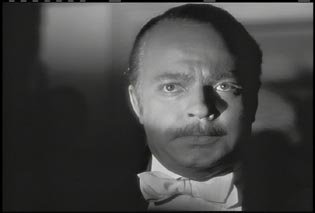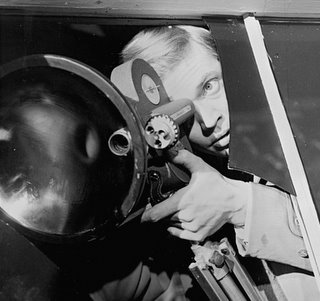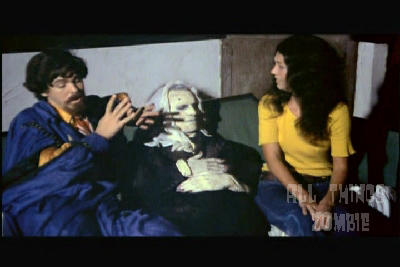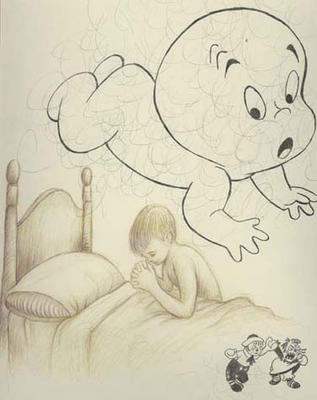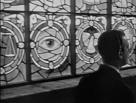(Note: This is an essay that originally appeared on a website I used to manage. I'm trying to use this present blogsite as an archive for earlier writings.) The first time I saw Fancois Truffaut's The 400 Blows (1959) was on television in the 1970s. During my high school years and the first few of college, I saw a number of films from France, Italy, Poland, and Japan that indelibly marked my halting departure from childhood and descent into what seemed at times a grinding emotional poverty, in which I cultivated disdain mingled with sentimental yearning; my friends at the time and I were of like minds--sardonic and spiritual all at once, self-righteous and -deprecating in a single breath. Amid this confusion I consumed revelatory films, all in the public space of our family room, in the rush and panic of various domestic tremors and a medley of uncertainties whose whimpers--if not whines--were drowned by Nixon's noisy mastication of the last scraps of civics class. How I clung to those foreign lessons in loss: aside from Truffaut's debut, there were Loves of a Blond (Forman/1965), La Belle et La Bete (Cocteau/1946), Knife in the Water (Polanski/1962), Rashomon (Kurosawa/1950) and La Strada (Fellini/1954). My memory of these films has been shaped by my post-adolescent mood of suppressed passion and idle threat; beyond that, I simply allowed the movies to handle all the rough stuff and heavy lifting.
The first time I saw Fancois Truffaut's The 400 Blows (1959) was on television in the 1970s. During my high school years and the first few of college, I saw a number of films from France, Italy, Poland, and Japan that indelibly marked my halting departure from childhood and descent into what seemed at times a grinding emotional poverty, in which I cultivated disdain mingled with sentimental yearning; my friends at the time and I were of like minds--sardonic and spiritual all at once, self-righteous and -deprecating in a single breath. Amid this confusion I consumed revelatory films, all in the public space of our family room, in the rush and panic of various domestic tremors and a medley of uncertainties whose whimpers--if not whines--were drowned by Nixon's noisy mastication of the last scraps of civics class. How I clung to those foreign lessons in loss: aside from Truffaut's debut, there were Loves of a Blond (Forman/1965), La Belle et La Bete (Cocteau/1946), Knife in the Water (Polanski/1962), Rashomon (Kurosawa/1950) and La Strada (Fellini/1954). My memory of these films has been shaped by my post-adolescent mood of suppressed passion and idle threat; beyond that, I simply allowed the movies to handle all the rough stuff and heavy lifting.
It makes sense to begin with The 400 Blows, if only because, of the movies I watched, it sits closest to childhood. Truffaut's persistent alter-ego, Antoine Doinel, makes his first appearance here at age fourteen, essentially abandoned, both physically, at least to an extent, and emotionally by his parents. This abandonment, though not deliberate or even entirely conscious, allows him to enter, even propels him to, a life of careless, minor crime--but, more important, a miniature underworld in which he lives without adults, an anti-Romantic Huck Finn whose Mississippi is the vicissitudes of city life without a direction home. And while Huck had the force of the river, and of Jim's moral compass, to mark his way, Antoine flees indiscriminately, wandering through a nervous, gray, and ultimately unconcerned Paris, until he too arrives at water's edge; for him, though, it is merely the unresolved end of his journey, not its beginning and motivation.
At first I responded to Truffaut's movie with a great deal of discomfort. Doinel seemed "bad" in an unattractive way; most of the kids I'd seen in the movies were absolutely safe; they were "little rascals" who formed "our gang" and enjoyed noisy vacations from parents and school. Truffaut's boy would or could not recognize he was just fooling around; for him, his crimes and the resultant reform school became an integral part of his identity. And nothing came of it but an almost absurdist journey-quest away from nothing in particular and toward the same. A few years later, listlessly fooling around myself in graduate school, I encountered "The Wanderer," who also stood on the shingle and considered his lowly, lonely state. An image rises in my mind: Antoine Doinel on the beach, his gaze, anxious yet blank, staring at the end of his childhood and, like the Wanderer, keeping it to himself. At fourteen, his foot had slid, and the abyss into which he called did not call back. I was only a year or two older than Antoine when I watched this movie, and the word "discomfort," which I mildly placed at the top of this paragraph, belies the feeling, something almost like anger, but closer to knee-wobbling anxiety, with which I greeted this film. Surely that isn't all there is? Today, I say there's more and hope I'm right. At fifteen or so, it was tough to keep everything from falling off the shelf.
Still, the younger you are, the easier it can be to conjure hope, especially in terms of love. Now, let's be clear here: Actual love is not the issue. We all live in a secret, but the older secrets of childhood and adolescence are large and manifold, culminating, at least for me, in early adulthood, where for a brief time I held, or so I thought, a monumental open secret from others, one that the kinder, less confident of us can be trusted to keep: That we do not know how to be adults, and are simply imitating each other--and there's another irony for you--as we make our way; if we're lucky, eventually we can breathe a little easier, having cobbled together what will suffice as our identity, at least until some later shock to the system forces us into a second adolescence. God forbid; one was almost too much, yes? But before the wearying subterfuges of early adulthood come the richer secrets of love--or, to be more or less honest, its lies.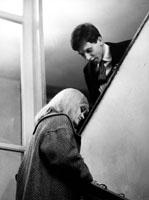
And the greatest lie we tell about love is that everyone is meant to have their portion, their "beautiful reward," as Springsteen puts it. About the time I first saw these films, I also was reading that master teller of small but devastating truths, Sherwood Anderson. I was stricken by the story of Alice Hindman, a woman who at twenty-five "began trying to force herself to face bravely the fact that many people must live and die alone." Anderson told such a convincing truth about loss that I rebelled and wished it a lie. Milos Forman in Loves of a Blond captures a little piece of that. His young Czech girl, trapped in a dull factory town, enamored of a young man from Prague, faces the truth of loneliness when she follows him to his home, arriving suddenly at the apartment he shares with his parents, who in his absence treat her to the most painful and simultaneously bitterly amusing--and protracted--cold shoulder in the history of film. Her dogged determination to be loved, and their stolid refusal--especially the mother--to provide even a crumb of false hope, sets her up for her dreary epiphany. All my life, I have entertained the hope that we do indeed deserve love, that it is one task in our job--the other, and perhaps the better, is to love, of course; but Forman's movie all too accurately portrays the world's general position on this: If one deserves anything, it's whipping. I must mention that Forman's film is not so violent in its approach. It's actually a rather quiet, matter-of-fact meanderer; nonetheless, it does arrive at a kind of humiliation, at least on the part of its viewers, in that one's assumptions about how much one is loved are tenuous at best. At nineteen or so, I was able to understand the blonde's assumptions and to feel horrified at her embarrassment of having to "face bravely the fact that many people must live and die alone," and sometimes in the presence of strangers.
Pardon the disgusting imagery, as Woody Allen says somewhere, but that plunge into love has the force of an archetype, and the rough-stroke feel of a fable. Both Cocteau's La Belle et La Bete and Polanski's Knife in the Water gave me a language for the dangers of such a force. I must admit, though, that much of Cocteau's version of the fairy tale impressed me because of its style: he used the camera aggressively to generate an air of the fabulous. The images glowed, the camera followed Beauty down those surreal corridors with insinuating familiarity. Magic occurred simply by reversing the action, allowing figures to fall with unnerving smoothness up into the midst of the story's simple but deep conflicts and resolutions. Along the way, Beauty had to drop from her hands things she loved--family, home--to pick up the Beast, to lean into his breath. The tale gives her hard choices, but I wished I had the same opportunity to bargain away everything just to be loved. I have revisited this movie only once since then, and my memory of its details is aptly limited to its famously arresting images, but what remains is a conviction that in Cocteau's world, a hungry heart can be satisfied only after one is willing to surrender and sacrifice.
One difficulty with watching these films during my post-adolescence was that they sometimes posited problems that were at least two steps ahead of me. I had too narrow a frame of reference, for instance, for Knife in the Water. How could I understand the murder of fidelity when I had not yet lived inside such fidelity? The bored and irritated wife who sides with the young stranger--whom the overbearing, bourgeois-assertive husband thought he had killed--and the young man himself, his knife always out, so to speak, his confidence both a perceived threat and a promise; these were people I did not know, except in the abstract, or by inclination. (After all, many teenagers stand every day--at least I did--on the narrow deck of a pleasure boat, ready and willing, albeit often alone.) Like La Belle et La Bete, Polanski's film lays out a stylized space in which to work out these concerns, a neverland that is Minimalist/Abstract to Cocteau's Romantic/Gothic. Just a few years later, I would watch the bad craziness, as Dr. Thompson would put it, of Polanski's Repulsion (1965), the Freudian hybrid of La Belle et La Bete and Knife in the Water, in which the anxieties of both films are pressure-cooked in Catherine Deneuve's homicidally repressed brain. I am thankful that I was almost old enough to watch this without cracking, because with the previous two films lurching around in there, my own brain seemed a little squeezed.
I was not, however, always alienated from these films. I understood with frustrating clarity the loss of truth in Kurosawa's Rashomon. I knew that the world is a haunted forest, and under those "dark, wet boughs" we do evil to one another, and once again often in full sight of witnesses. But their presence does not provoke justice; in fact, some of them turn out to be perpetrators, while the rest are so afraid, they lie--first to themselves, to make easier the lying to others. These were the political lessons of the 1970s, as well as the personal lessons of my life back then. I knew that the truth was both powerful and elusive, but I was too uncertain to make use of that power and too confused to grasp it firmly. It is fitting that the print I saw of Rashomon was faded and damaged; it matches the mood of the film and its post-adolescent viewer.
Felinni's La Strada is aptly titled here: for me it is the end of the road, the last way, where fading memories assert, not the details, but the lasting impression. The more I reflect, the more I must admit that this movie has become my cinematic acid test. If a film does not move me as La Strada did, it diminishes. I was most struck by two things in Felinni's movie: the cruelty of Anthony Quinn's Zampano, a strong man who bullies the diminutive Gelsomina, played with mime-like perfection by Giulietta Masina; and his love for her, repressed and deflected, until he loses her and is left alone, like Antoine Doinel before him so many years ago in this present foreign film autobiography, like that Anglo-Saxon Wanderer and Forman's Blonde--even, for a time, like La Bete and Polanski's foolish bourgeoisie, not to mention Rashomon's panicked truthful liars.
I have nothing new to say here: this loneliness simply breaks one's heart. Again, whenever a movie catches me by surprise and dizzies me with a sudden drop, it is the same howl of impotent rage I heard in La Strada. It is beyond Brando's "Stella!" and Welles' "I'm Charles Foster Kane!" but I feel it in those films, and some that came afterward, even if only in a long shot or short burst. Scorsese knows this moment, and has approached it many times, from Taxi Driver to The Aviator. To be honest, I think I keep insisting that Scorsese is our greatest living director because he hears clearly the sound of loss, and tries to ring its changes when he can.
Having written all this, I have come to realize that I still haven't watched The Passion of the Christ from the fear that it is a two-hour version of the last ten minutes of the films I've been discussing. I hesitate to offer any real commentary on a movie I haven't seen, but I would suggest that the sadism and gore that many have complained of, been repulsed by, jeered at, are nothing more than Gethsemane's legacy. All those lonely people staring blankly, raging, wandering off, lost in one Mirkwood or another, have asked for the cup to be taken from them--have asked, in the universal Last Temptation, to be human only, and left out of the business of God, which can seem cruel, divorced from what we want. And, of course, it often is just that, which is why in my adolescence I was drawn to those foreign films, whose images--of the water's edge, the menacing clearing in the wood, the road, the dimly lit corridor--provided "special mirrors," as Brecht says of the theater, of my own imploring posture and eventual, albeit partial, surrender to the dangerous joys of the will to love.
(9/20/2004)
 Eyes without a Face (Les Yeux sans visage) (1960)
Eyes without a Face (Les Yeux sans visage) (1960)